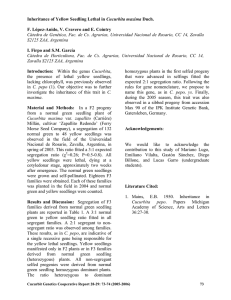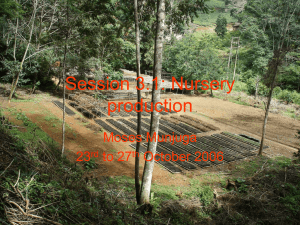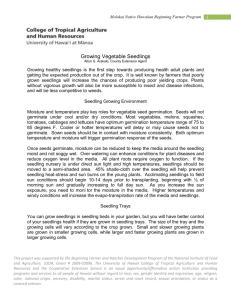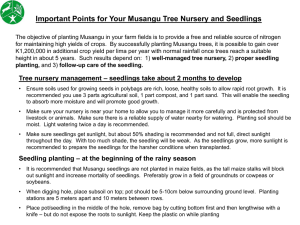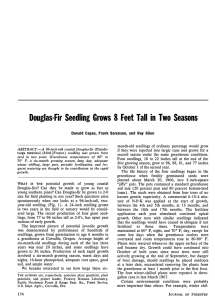Bio 270 Ecology and Evolution 2011 – pine lab supplement Revised
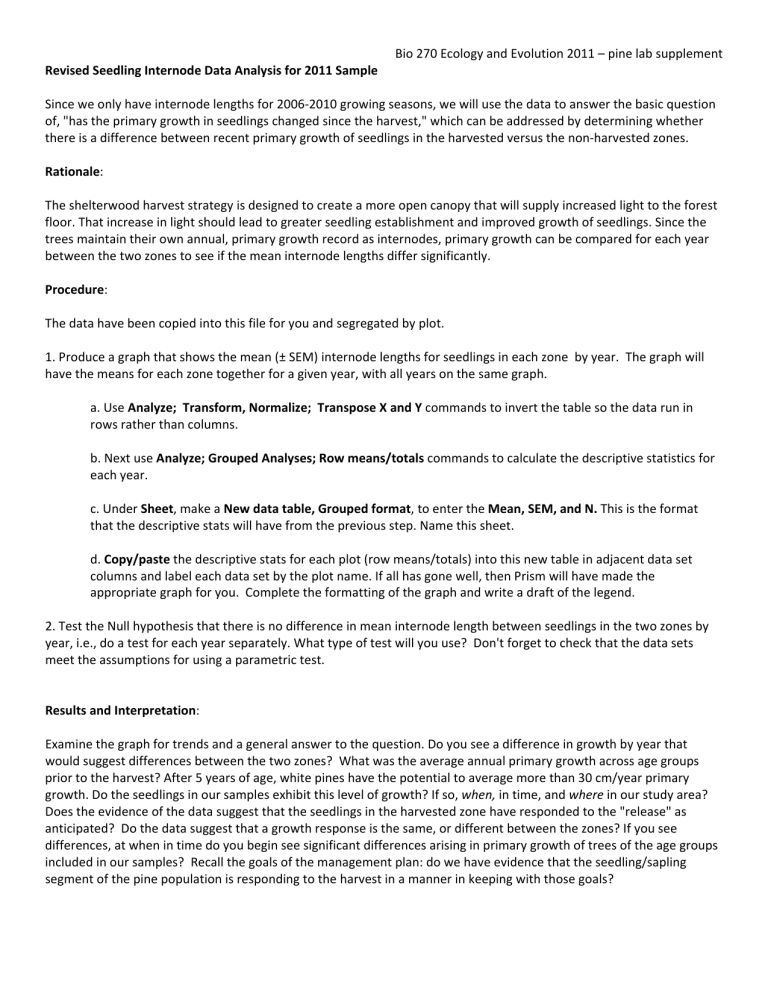
Bio 270 Ecology and Evolution 2011 – pine lab supplement
Revised Seedling Internode Data Analysis for 2011 Sample
Since we only have internode lengths for 2006-2010 growing seasons, we will use the data to answer the basic question of, "has the primary growth in seedlings changed since the harvest," which can be addressed by determining whether there is a difference between recent primary growth of seedlings in the harvested versus the non-harvested zones.
Rationale :
The shelterwood harvest strategy is designed to create a more open canopy that will supply increased light to the forest floor. That increase in light should lead to greater seedling establishment and improved growth of seedlings. Since the trees maintain their own annual, primary growth record as internodes, primary growth can be compared for each year between the two zones to see if the mean internode lengths differ significantly.
Procedure :
The data have been copied into this file for you and segregated by plot.
1. Produce a graph that shows the mean (± SEM) internode lengths for seedlings in each zone by year. The graph will have the means for each zone together for a given year, with all years on the same graph. a. Use Analyze; Transform, Normalize; Transpose X and Y commands to invert the table so the data run in rows rather than columns. b. Next use Analyze; Grouped Analyses; Row means/totals commands to calculate the descriptive statistics for each year. c. Under Sheet , make a New data table, Grouped format , to enter the Mean, SEM, and N.
This is the format that the descriptive stats will have from the previous step. Name this sheet. d. Copy/paste the descriptive stats for each plot (row means/totals) into this new table in adjacent data set columns and label each data set by the plot name. If all has gone well, then Prism will have made the appropriate graph for you. Complete the formatting of the graph and write a draft of the legend.
2. Test the Null hypothesis that there is no difference in mean internode length between seedlings in the two zones by year, i.e., do a test for each year separately. What type of test will you use? Don't forget to check that the data sets meet the assumptions for using a parametric test.
Results and Interpretation :
Examine the graph for trends and a general answer to the question. Do you see a difference in growth by year that would suggest differences between the two zones? What was the average annual primary growth across age groups prior to the harvest? After 5 years of age, white pines have the potential to average more than 30 cm/year primary growth. Do the seedlings in our samples exhibit this level of growth? If so, when, in time, and where in our study area?
Does the evidence of the data suggest that the seedlings in the harvested zone have responded to the "release" as anticipated? Do the data suggest that a growth response is the same, or different between the zones? If you see differences, at when in time do you begin see significant differences arising in primary growth of trees of the age groups included in our samples? Recall the goals of the management plan: do we have evidence that the seedling/sapling segment of the pine population is responding to the harvest in a manner in keeping with those goals?



